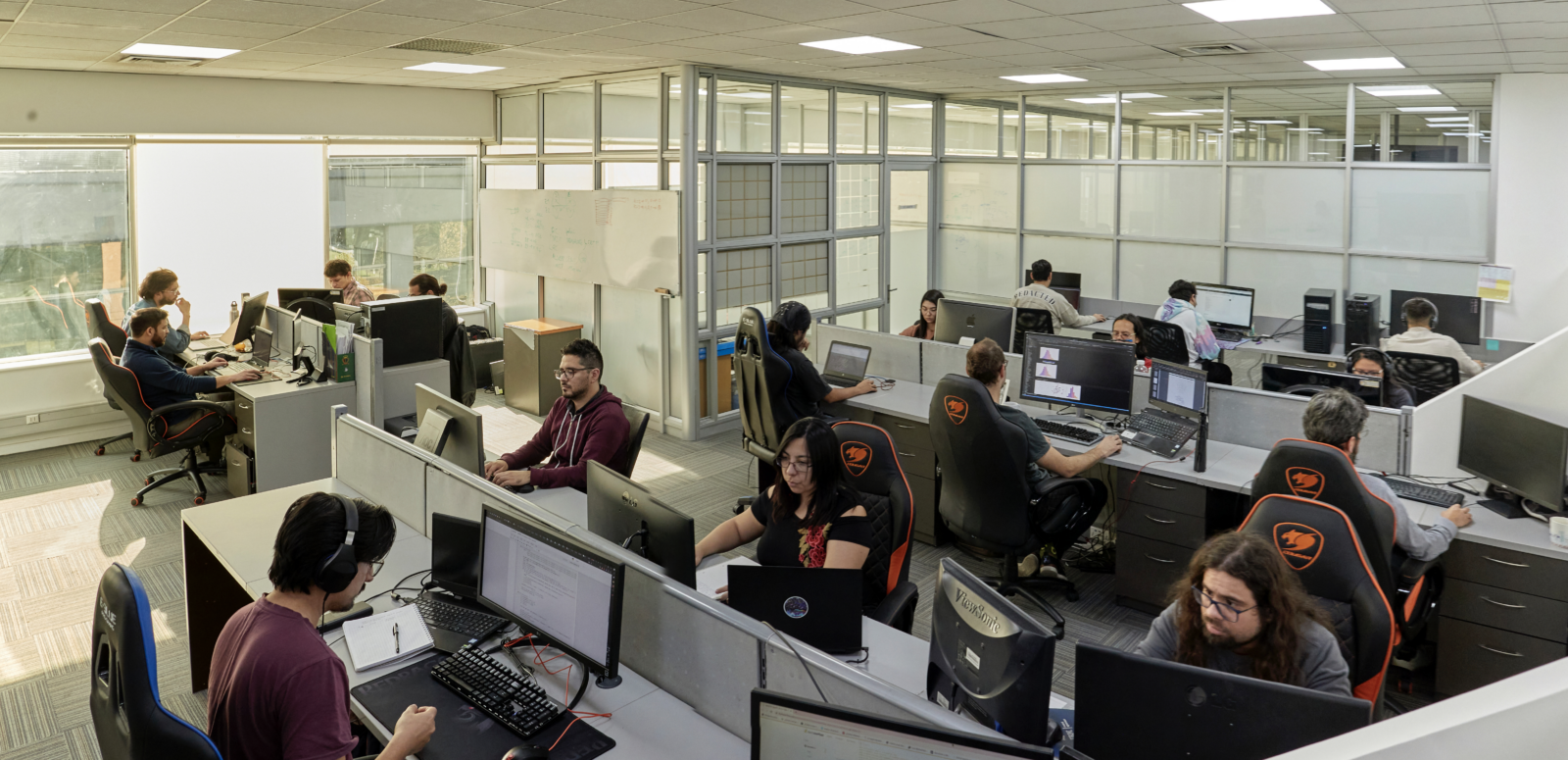Profile
The main objective of the Computational Biology Laboratory (DLab) is to produce multi-scale computational models to get insights on the fundamental structure and dynamics underlying complex biological phenomena. To do so, we use and produce computer-based simulation tools by combining advanced mathematical modeling, thermodynamics, physics and chemistry, together with high performance computing (HPC) techniques. Whilst our main goal is to produce a tool for multi-scale simulation of biological systems, we also study biological processes at single scales. At the micro-scale (atomic level), we use tools from molecular modeling and molecular simulations to understand the physicochemical properties that govern intercellular communication mediated by gap-junction channels, the structure and function of water at the nanoscale, and molecular recognition and signal transduction processes mediated by proteins. At the meso-scale (cell level) we use network topology and machine leaning techniques to infer and characterize cell signaling networks, gene regulation and neural coordination. At the macro-scale (population level) we use stochastic rule-based modeling to study the behavioral adaptation of artificial populations (agents) due to the spread of infectious diseases and information.
- Research Head: Tomás Pérez-Acle
- Associated Researcher:
- César Ravello cesar@dlab.cl
- Alvaro Ruiz aruiz@dlab.cl
- Felipe Villanelo felipe@dlab.cl
- Postdoctoral Fellows:
- Alejandro Bernardin abernardin@dlab.cl
- Gonzalo Núñez gonzalo.nunez@dlab.cl
- Graduate Students:
- Soraya Mora soraya.paz.mora@gmail.com
- Joaquin Jensen joaco.jensen@dlab.cl
- María José Pozo mjpozom@dlab.cl
- Pablo Monares pmonares@dlab.cl
- Pablo Morales pmorales@dlab.cl
- Jorge Carrasco j.carrasco@dlab.cl
- Samuel Ropert sropert@dlab.cl
- Undergraduate Students:
- Fabián Parra fparra@dlab.cl
- Research Assistants:
- Yasna Barrera ybarrera@dlab.cl
- Manuel Muñoz manuel.munozr@dlab.cl
- José Manuel Cabello juancabellog@dlab.cl
Alberto Martin
José Antonio Gárate
Sebastián Gutiérrez
Yerko Escalona
Sebastián Contreras
Rodrigo Santibañez
Ignacio Fuenzalida
Carlos Yañez
Claudia Pareja
National Collaborations:
• Juan Carlos Sáez (Departamento de Fisiología, Universidad Católica de Chile)
• Agustín Martínez (Centro Interdisciplinario de Neurociencias de Valparaíso, Universidad de Valparaíso)
• Kathleen Withlock (Centro Interdisciplinario de Neurociencias de Valparaíso, Universidad de Valparaíso)
• Patricio Orio (Centro Interdisciplinario de Neurociencias de Valparaíso, Universidad de Valparaíso)
• Adrian Palacios (Centro Interdisciplinario de Neurociencias de Valparaíso, Universidad de Valparaíso)
• Carlos González (Centro Interdisciplinario de Neurociencias de Valparaíso, Universidad de Valparaíso)
• Danilo Gonzalez-Nilo (Centro de Bioinformática y Biología Integrativa, UNAB)
International Collaborations:
• Dr. Ruhong Zhou (Head of the Soft Matter Science Group, Computational Biology Center, J.T. Watson IBM Research Center, Yorktown Heights, NY, USA)
• Dr. Martha Skerrett (State University of New York College at Buffalo, NY, USA)
• Dr. Viviana Berthoud (The University of Chicago, IL, USA)
• Dr. Niall English (School of Bioprocess Engineering of the University College Dublin)
• Dr. Chris Oostenbrink (Molecular Modeling and Simulation Group, University of Natural Resources and Life Sciences, Vienna, Austria)
Publications
Araya-Secchi R., Garate J. A., Holmes D. S. and Perez-Acle T. Molecular dynamics study of the archaeal aquaporin AqpM. BMC Genomics 11-13 (2001) | PDF | Abstract
Tischler N. D., Gonzalez A., Perez-Acle T., Rosemblatt M. and Valenzuela P. D. T.Hantavirus Gc glycoprotein: evidence for a class II fusion protein. J. Gen. Virol. 86, 2937-2947 (2005) | PDF | Abstract
Strobel P., Allard C., Perez-Acle T., Calderon R., Aldunate R. and Leighton F.Myricetin quercetin and catechin-gallate inhibit glucose uptake in isolated rat adipocytes. Biochem. J. 386, 471-478 (2005) | PDF | Abstract
Gonzalez A., Duran Sepulveda L., Araya-Secchi R., Garate J. A., Pessoa-Mahana C. D., Lagos C. F. and Perez-Acle T. Computational modeling study of functional microdomains in cannabinoid receptor type 1. Bioorg. Med. Chem. 16 (8): 4378-4389 (2008) | PDF | Abstract
Lizama C., Lagos C. F., Lagos-Cabré R., Cantuarias L., Rivera F., Huenchuñir P., Pérez-Acle T., Carrión F. and Moreno R. D. Calpain inhibitors prevent p38 MAPK activation and germ cell apoptosis after heat stress in pubertal rat testes. J. Cell. Physiol. 221 (2): 296-305 (2009) | PDF | Abstract
Muñoz F., Mejía-López J., Pérez-Acle T. and Romero A. H. Uniaxial magnetic anisotropy energy of fe wires embedded in carbon nanotubes. ACS Nano. 4 (5): 2883-2891 (2010) | PDF | Abstract
González A., Perez-Acle T., Pardo L. and Deupi X.Molecular basis of ligand dissociation in β-adrenergic receptors. Plos ONE 6 (9): 01-09 (2011) | PDF | Abstract
Nuñez F., Ravello C., Urbina H. and Perez-Acle T.A rule-based model of a hypothetical zombie outbreak: Insights on the role of emotional factors during behavioral adaptation of an artificial population. (16,05,49): 01-20 (2012) | PDF | Abstract
Jara O., Acuña R., García I. E., Maripillán J., Figueroa V., Sáez J. C., Araya-Secchi R., Lagos C. F., Perez-Acle T., Berthoud V. M., Beyer E. C. and Martínez A. D. Critical role of the first transmembrane domain of Cx26 in regulating oligomerization and function. Mol. Biol. Cell. 23, 3299-3311 (2012) | PDF | Abstract
Garate J.A., Perez-Acle T., Oostenbrink C.On the thermodynamics of carbon nanotube single-file water loading: free energy, energy and entropy calculations. Phys Chem Chem Phys. 16(11):5119-5128. (2014) | PDF | Abstract
Araya-Secchi R, Perez-Acle T, Kang SG, Huynh T, Bernardin A, Escalona Y, Garate JA, Martínez AD, García IE, Sáez JC, Zhou R.Characterization of a novel water pocket inside the human Cx26 hemichannel structure. Biophys J. 2014 Aug 5;107(3):599-612. doi: 10.1016/j.bpj.2014.05.037
Retamal MJ, Cisternas MA, Gutierrez-Maldonado SE, Perez-Acle T, Seifert B, Busch M, Huber P, Volkmann UG. Towards bio-silicon interfaces: formation of an ultra-thin self-hydrated artificial membrane composed of dipalmitoylphosphatidylcholine (DPPC) and chitosan deposited in high vacuum from the gas-phase. J Chem Phys. 2014 Sep 14;141(10):104201. doi: 10.1063/1.4894224
Brennan MJ, Karcz J, Vaughn NR, Woolwine-Cunningham Y, DePriest AD, Escalona Y, Perez-Acle T, Skerrett IM. Tryptophan Scanning Reveals Dense Packing of Connexin Transmembrane Domains in Gap Junction Channels Composed of Connexin32. J Biol Chem. 2015 May 12. pii: jbc.M115.650747


